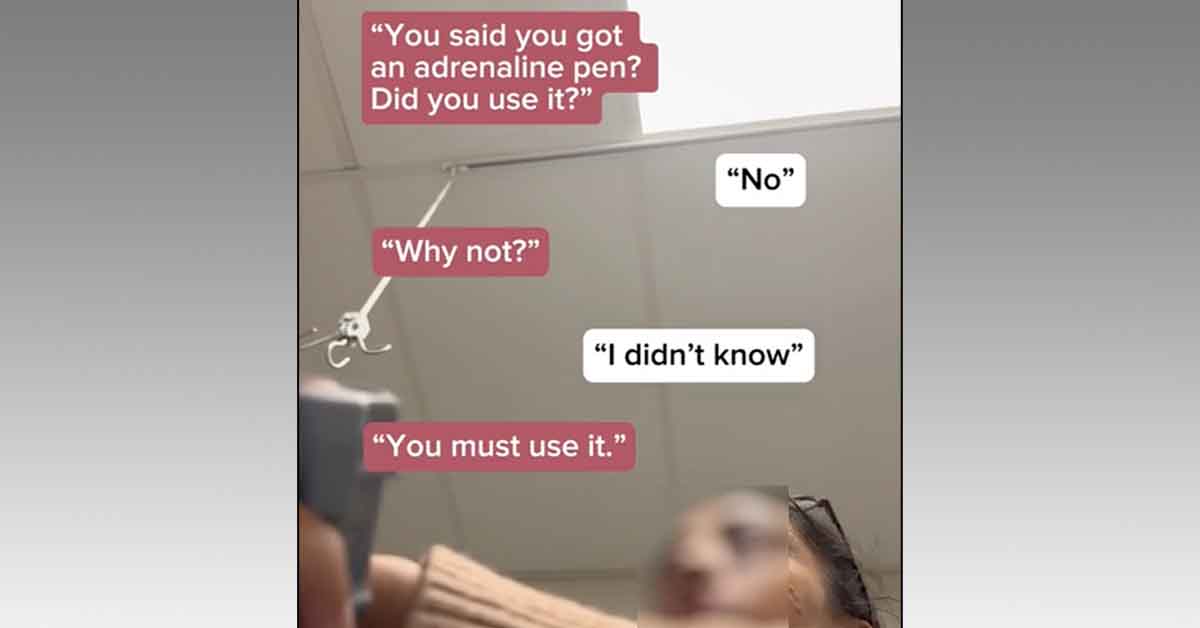While we at SnackSafely.com generally try to focus on what you should do when suffering a severe allergic reaction, sometimes we come across a teaching moment that shows what you shouldn’t do. This is one of those moments.
TikToker @shiv_sewlal posted a video in the throes of what was definitely a severe reaction. She asserts that she didn’t eat anything out of the ordinary and didn’t feel sick despite the horrific swelling that nearly forced her eyes shut.
Here is her TikTok with a warning that there are signs of a severe reaction that may be triggering to some:
@shiv_sewlal I still don’t know what I touched that caused the reaction 😅 but after rubbing my eyes – I immediately started swelling up #allergicreactioncheck #peanutallergyawareness #epipencheck ♬ original sound – SHIV
So many things that went wrong are illustrative of what not to do, but we’ll select the most egregious:
- First and most obvious, should you suffer a severe reaction, don’t waste time capturing the moment for your audience. Time is of the essence and you may have very little of it before you lose consciousness or become unable to take action.
- Don’t wait to administer epinephrine when you show severe reaction symptoms. Epinephrine is the only drug that can halt and reverse the progression of anaphylaxis, but you must administer it as soon as possible upon onset for it to be most effective. Although this TikToker had access to an epinephrine auto-injector (adrenaline pen), she never bothered to administer it much to the consternation of the ER doctor in this video. She required three doses of epinephrine to bring her symptoms under control, likely due to the delay in administration.
- Don’t take yourself or wait for a rideshare to go to the hospital. After administering epinephrine, call emergency services immediately as they have the resources to treat you and monitor your condition on the way to the ER and will provide important information to staff there if you are unable to.
As always, we urge you to carry two epinephrine auto-injectors everywhere, every time, and to administer one when you first suspect anaphylaxis and call emergency services.





